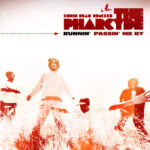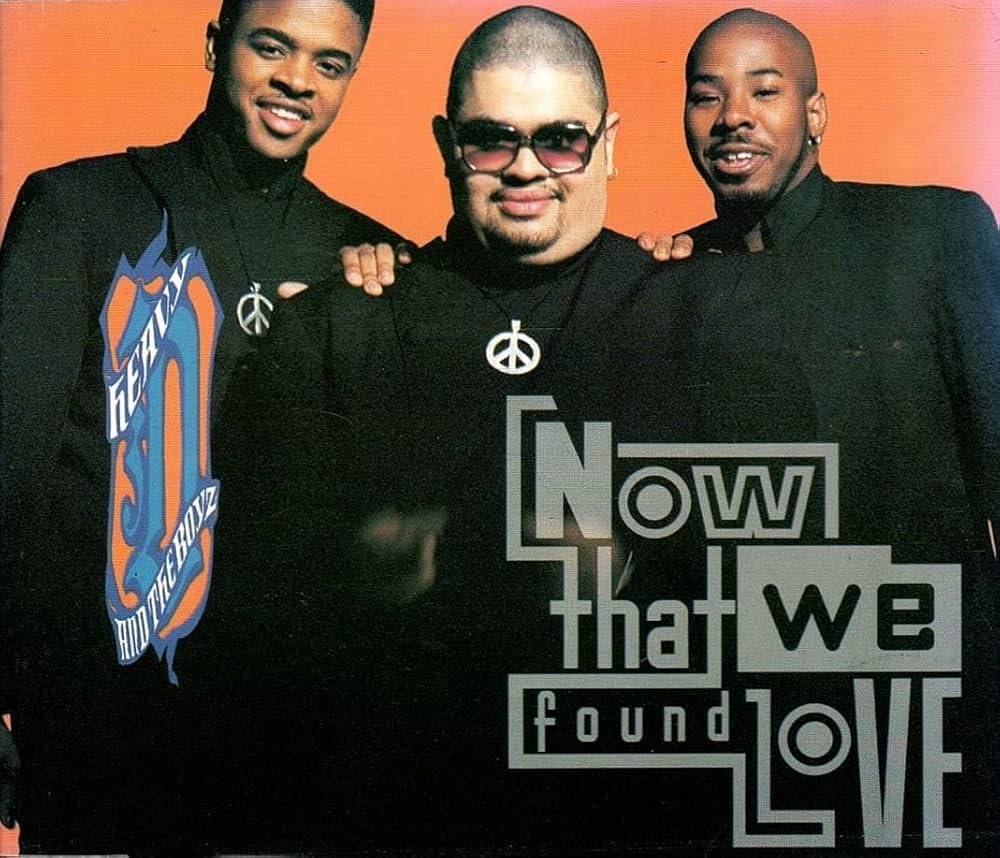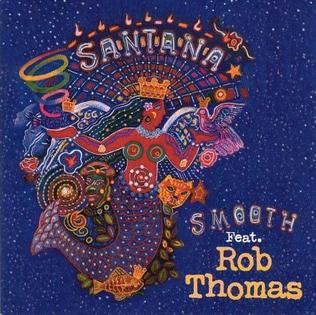 “Runnin’” by The Pharcyde is one of those rare hip-hop tracks that manages to encapsulate an entire spectrum of human emotion within the span of a few minutes while remaining deceptively smooth and accessible. Released in 1995 as part of their seminal album Labcabincalifornia, “Runnin’” is a reflection on life’s challenges, the passage of time, and the constant search for purpose, all wrapped in a laid-back, jazzy production that somehow feels both effortless and profound. The Pharcyde, comprised of Imani, Slimkid3, Bootie Brown, and Fatlip, brought a refreshing combination of lyrical sophistication, wit, and vulnerability to the mid-90s West Coast hip-hop scene, a period often dominated by the harder, street-oriented gangsta rap aesthetic. With “Runnin’,” they demonstrated that hip-hop could be introspective, playful, and deeply human all at once, balancing reflection with infectious rhythms that demand attention. The song’s enduring appeal lies in its ability to speak to the universal experience of running—from fears, from obligations, from oneself—while remaining musically and lyrically engaging across decades.
“Runnin’” by The Pharcyde is one of those rare hip-hop tracks that manages to encapsulate an entire spectrum of human emotion within the span of a few minutes while remaining deceptively smooth and accessible. Released in 1995 as part of their seminal album Labcabincalifornia, “Runnin’” is a reflection on life’s challenges, the passage of time, and the constant search for purpose, all wrapped in a laid-back, jazzy production that somehow feels both effortless and profound. The Pharcyde, comprised of Imani, Slimkid3, Bootie Brown, and Fatlip, brought a refreshing combination of lyrical sophistication, wit, and vulnerability to the mid-90s West Coast hip-hop scene, a period often dominated by the harder, street-oriented gangsta rap aesthetic. With “Runnin’,” they demonstrated that hip-hop could be introspective, playful, and deeply human all at once, balancing reflection with infectious rhythms that demand attention. The song’s enduring appeal lies in its ability to speak to the universal experience of running—from fears, from obligations, from oneself—while remaining musically and lyrically engaging across decades.
The song opens with a sample that immediately establishes a contemplative, soulful mood. “Runnin’” famously incorporates a loop from Stan Getz and Bill Evans’ “Saudade Vem Correndo,” which provides a jazzy, almost cinematic backdrop for the narrative. The sample’s mournful yet warm tonality perfectly complements The Pharcyde’s reflective lyrics, evoking a sense of nostalgia and melancholy without ever becoming overly sentimental. This clever use of jazz sampling underscores the group’s musical sophistication, a hallmark of their work that sets them apart from much of the mainstream hip-hop of the era. The interplay between the lush instrumental and the vocal delivery creates a hypnotic quality that draws the listener in from the very first beat.
Lyrically, “Runnin’” is a masterclass in storytelling and introspection. Each member of The Pharcyde contributes verses that are both personal and relatable, navigating themes of ambition, pressure, and self-discovery. The song opens with Fatlip reflecting on the challenges of growing up and the desire to escape societal expectations. His cadence, smooth yet urgent, captures the tension between wanting to succeed and the fear of failure, a duality that resonates with anyone who has ever felt trapped by circumstance. Slimkid3 follows with a verse that explores similar themes, but with a playful self-awareness that offsets the weightiness of the content, demonstrating The Pharcyde’s unique ability to balance seriousness with levity.
Bootie Brown’s verse adds another layer of reflection, delving into the struggles of relationships and personal accountability. His flow is relaxed, almost conversational, which makes the listener feel as though they are hearing the artist’s genuine thoughts rather than a constructed performance. Imani rounds out the track with introspective commentary that ties the song’s themes together, emphasizing the cyclical nature of life’s challenges and the constant pursuit of growth. The cumulative effect of these verses is a nuanced meditation on life, ambition, and human frailty, articulated in a way that is both specific to the artists’ experiences and universal in its resonance.
One of the most striking aspects of “Runnin’” is how it captures the tension between movement and stillness. The lyrics constantly reference running—not just as a physical act, but as a metaphor for evasion, survival, and self-exploration. This motif resonates on multiple levels: listeners can interpret it as running from external pressures, internal fears, or even from the inevitability of change itself. The song’s title is deceptively simple, but the thematic depth embedded in the concept of running gives it a philosophical dimension. It invites listeners to examine their own lives, to consider what they might be running from, and to reflect on how these struggles shape identity and purpose.
Musically, the song’s production by J-Swift complements these lyrical themes perfectly. The beat is smooth and laid-back, punctuated by a steady rhythm that mirrors the act of running itself—a continuous motion that is persistent but never frantic. The instrumental arrangement creates a sense of space and movement, allowing the lyrics to breathe and the listener to engage fully with each line. The combination of the jazz sample, subdued percussion, and subtle basslines contributes to a sonic landscape that is both relaxing and thought-provoking, enhancing the introspective quality of the song. This balance of groove and depth is part of what makes “Runnin’” timeless, allowing it to appeal to casual listeners and dedicated hip-hop aficionados alike.
The chorus of “Runnin’” is particularly memorable and serves as the thematic anchor of the song. The repetition of the line “Though I try, I don’t mind / That you get what you want, when you want it” conveys resignation and acceptance, acknowledging the uncontrollable nature of life’s challenges while asserting a sense of resilience. The melodic delivery of the hook, combined with the understated instrumentation, ensures that the message is both clear and emotionally resonant. Unlike more aggressive or confrontational hooks common in hip-hop, The Pharcyde’s approach here is contemplative, inviting reflection rather than inciting hype. This reflective quality elevates the track beyond its catchy surface, revealing the intellectual and emotional depth that has contributed to its lasting impact.
“Runnin’” also stands out for its collaborative energy. The interplay between the group members—each bringing their own perspective, tone, and cadence—creates a dynamic that feels spontaneous and authentic. The verses are distinct yet complementary, allowing each member’s personality and lyrical style to shine while maintaining cohesion within the track. This group synergy is a hallmark of The Pharcyde’s work, and it contributes to the song’s enduring appeal. The collaborative nature of the track mirrors the communal experience of life’s struggles and triumphs, reinforcing the song’s themes of connection, reflection, and shared human experience.
The cultural impact of “Runnin’” extends far beyond its original release. It has been sampled, referenced, and covered by numerous artists across genres, demonstrating its influence and versatility. The song’s blend of introspective lyricism, sophisticated production, and memorable hook has made it a touchstone for discussions about the evolution of hip-hop in the 1990s. It represents a period when West Coast rap was diversifying, moving beyond the gangsta narratives that dominated the charts to embrace more complex, nuanced explorations of identity, society, and personal experience. “Runnin’” embodies this shift, offering an alternative perspective that is at once deeply human and musically adventurous.
The music video for “Runnin’” further enhances the song’s impact. Featuring surreal, visually striking imagery that complements the track’s themes of pursuit and introspection, the video underscores the song’s narrative while providing a distinctive aesthetic experience. The combination of performance footage and conceptual visuals creates a sense of journey and momentum, reinforcing the metaphorical act of running and the emotional undertones of the lyrics. The video’s enduring popularity reflects the song’s ability to connect with audiences through multiple mediums, adding another layer of resonance to its already rich musical and lyrical content.
Another notable aspect of “Runnin’” is its ability to balance introspection with accessibility. The song’s lyrics are thoughtful and reflective, yet the groove, flow, and melodic hooks ensure that it remains engaging on a purely musical level. This duality allows the track to operate effectively on multiple planes: as a cerebral meditation, a narrative journey, and a rhythmic experience. The Pharcyde’s skillful integration of these elements demonstrates their artistry and vision, creating a track that continues to captivate listeners decades after its initial release.
“Runnin’” also exemplifies the use of narrative within hip-hop. Each verse tells a story, offering glimpses into the artists’ personal experiences while addressing universal themes of struggle, growth, and self-awareness. The narrative arc is subtle but coherent, moving from introspection to observation and finally toward a contemplative resolution. This narrative depth sets “Runnin’” apart from more conventional party or braggadocio tracks of the era, positioning it as a work that is both artistically ambitious and emotionally resonant. The storytelling approach allows listeners to engage with the song on a personal level, fostering empathy and reflection while still enjoying the musicality of the track.
The track’s enduring relevance is also due to its emotional authenticity. The Pharcyde’s willingness to address vulnerability, uncertainty, and existential questioning imbues “Runnin’” with a timeless quality. Listeners can hear themselves in the verses, whether they are reflecting on personal challenges, societal pressures, or the broader human condition. The song’s ability to articulate complex emotions with clarity and nuance ensures that it remains meaningful across generations, a testament to The Pharcyde’s lyrical and musical craftsmanship.
“Runnin’” also demonstrates the power of restraint in hip-hop production. The beat is understated, allowing the lyrics to take center stage, yet it remains compelling and rhythmically engaging. The use of space, silence, and subtle instrumental flourishes creates a sonic environment that is contemplative without sacrificing groove. This approach contrasts with the bombastic production trends of the mid-90s, highlighting The Pharcyde’s commitment to musical integrity and their understanding of the interplay between message and medium. The result is a track that feels effortless, cohesive, and emotionally potent, with each element contributing purposefully to the whole.
Another layer of significance in “Runnin’” is its exploration of temporality and reflection. The lyrics often reference the passage of time, missed opportunities, and the inevitability of change, imbuing the song with a sense of urgency and contemplation. The Pharcyde’s delivery—thoughtful, measured, and rhythmically fluid—mirrors the ebb and flow of life itself, creating a listening experience that is simultaneously engaging and meditative. The track’s temporal awareness enhances its thematic depth, reinforcing the sense that running is not just an action but a state of being, a continual negotiation with the forces that shape one’s existence.
The song’s influence extends beyond hip-hop into broader musical and cultural conversations. Its blending of jazz-infused production, introspective lyricism, and narrative cohesion has inspired artists across genres, from neo-soul to alternative R&B to contemporary rap. “Runnin’” exemplifies the potential of hip-hop to be both musically sophisticated and emotionally resonant, demonstrating that the genre can serve as a vehicle for reflection, storytelling, and artistic innovation. Its continued relevance and resonance highlight the track’s status as a touchstone in the evolution of hip-hop and popular music more broadly.
Ultimately, “Runnin’” by The Pharcyde is a masterful fusion of musicality, lyricism, and introspection. It captures the complexity of human experience—struggle, growth, reflection, and resilience—while remaining musically compelling and accessible. The song’s enduring appeal lies in its ability to balance groove with substance, playfulness with profundity, and individuality with universal resonance. It is a track that invites repeated listening, offering new insights and emotional depth with each encounter.
The Pharcyde’s artistry, evident in the interplay between the members, the sophisticated production, and the evocative sampling, ensures that “Runnin’” remains a landmark in hip-hop history. Its lyrical vulnerability, narrative sophistication, and sonic elegance combine to create a song that transcends time and genre, a reflection on life that resonates as strongly today as it did at its release. “Runnin’” is more than a song; it is a meditation on existence, a celebration of artistry, and a testament to the enduring power of thoughtful, authentic hip-hop to capture the human experience in all its complexity.
The legacy of “Runnin’” endures not simply because of its catchy hook or memorable beat, but because of its emotional honesty, musical innovation, and narrative depth. The Pharcyde managed to craft a track that is intellectually engaging, emotionally resonant, and sonically timeless, a rare combination in any genre. “Runnin’” invites listeners to reflect on their own lives, to consider the forces they are running from, and to appreciate the beauty in self-awareness, vulnerability, and musical ingenuity. Decades later, it remains a track that challenges, inspires, and entertains—a true classic that exemplifies the best of what hip-hop can achieve.
From its jazzy sampling to its introspective verses, from its memorable hook to its enduring cultural influence, “Runnin’” by The Pharcyde is a song that transcends its era while remaining firmly rooted in the spirit of 1990s hip-hop. It represents a moment of artistic ambition, emotional candor, and musical sophistication, capturing the tension, humor, and humanity of life’s journey. The song’s timeless appeal ensures that it will continue to resonate with listeners for generations, a testament to The Pharcyde’s vision, creativity, and enduring impact on music and culture.


